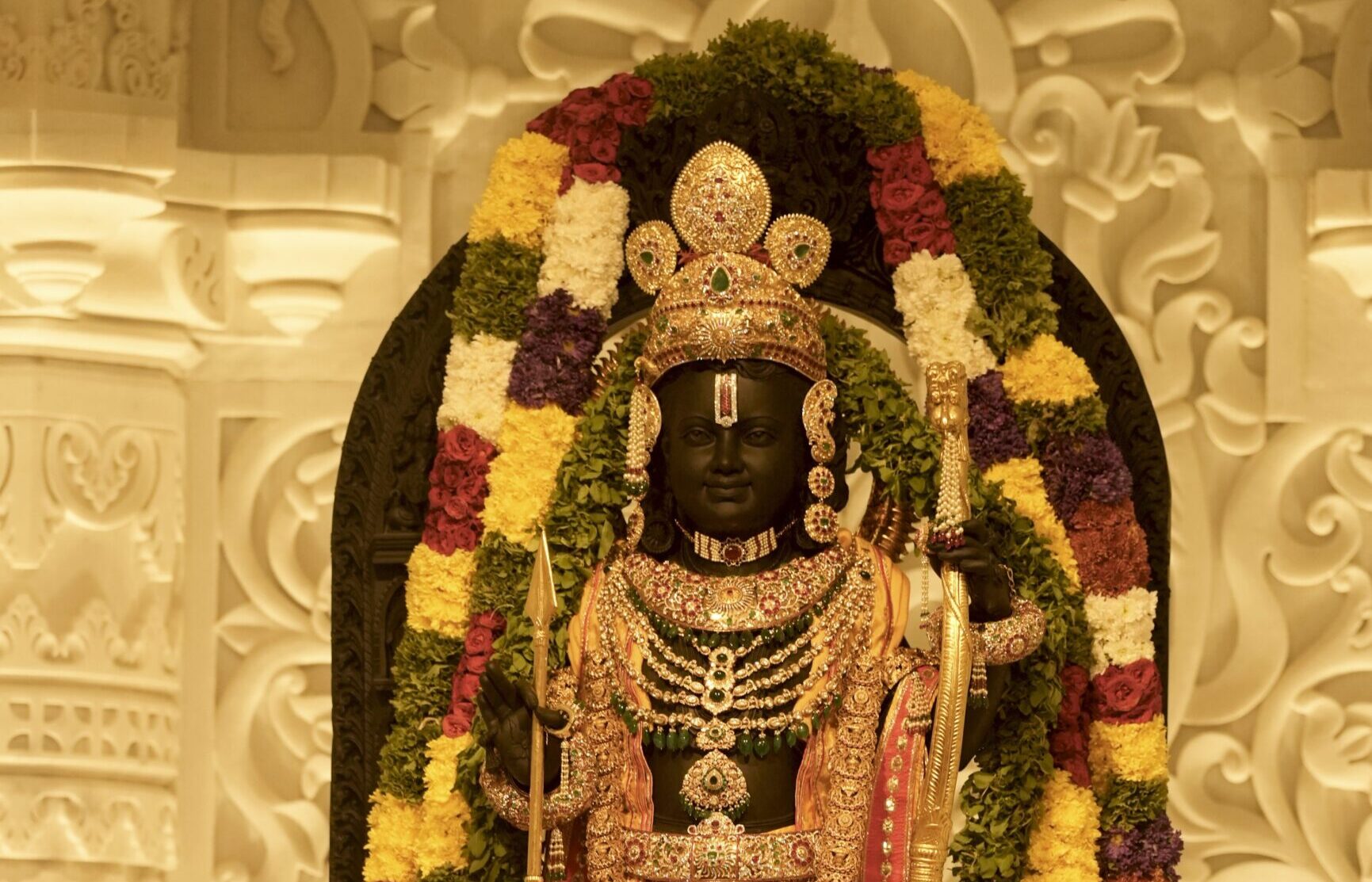
By: Eastern Eye
THE new Ram idol consecrated at the temple on Monday (23) will be known as “Balak Ram” as it depicts the deity as a five-yearold boy in a standing posture.
Arun Dixit, a priest associated with the consecration ceremony, said, “The reason for naming the idol of Lord Ram as ‘Balak Ram’ is that he resembles a child, whose age is five years.”
He added, “The first time I saw the idol, I was thrilled and tears started rolling down my face. I cannot explain the feeling I experienced then.”
The Varanasi-based priest, who has conducted nearly 50-60 consecrations, said, “Of all the consecrations (I have) performed so far, this is the most alaukik (divine) and sarvoch (supreme) for me.”
Dixit said he had his first glimpse of the idol last Thursday (18). It was consecrated on Monday in a ceremony led by prime minister Narendra Modi, who said it marked the advent of a new era. The old idol of Ram Lalla, which was earlier kept in a makeshift shrine, has been placed in front of the new one.
According to the Shri Ram Janmabhoomi Teerth Kshetra, the idol’s ornaments were chosen after extensive research of texts such as the Adhyatma Ramayana, Valmiki Ramayana, Ramcharitmanas and the Alavandar Stotram.
The idol is adorned in Banarasi fabric, featuring a yellow dhoti and a red pataka or angavastram.
The angavastram is embellished with pure gold zari threads, featuring auspicious Vaishnav symbols – shankh (conch shell), padma (lotus), chakra (wheel) and mayur (peacock).
The ornaments were crafted by Ankur Anand’s Lucknowbased Harsahaimal Shiamlal Jewellers, while the garments were created by textile designer Manish Tripathi from Delhi, who worked from Ayodhya Dham for the project.
The 51-inch idol chiselled by Mysore-based sculptor Arun Yogiraj has been carved out of a three billion-year-old rock. The azure-coloured Krishna Shile (black schist) was excavated from the city in the south Indian state of Karnataka. It is a fine-tomedium-grained, sky-blue metamorphic rock, generally called soapstone because of its smooth surface texture.
Reports said the stone was chosen as it is non reactive and was better suited for any liquids used in ritual ceremonies. The colour is also said to be in keeping with how the deity as depicted in Valmiki’s Ramayan.
Yogiraj, who was praised for his work, said, “I have always felt that Lord Ram has been shielding me and my family from all the bad times, and I strongly believe that it was him who chose me for the auspicious task.
“I spent sleepless nights working on the idol with precision, but it was all worth it. I feel I am the luckiest person on earth and today is the best day of my life. I learnt the art of sculpting from my father. He would have been very proud to see my idol here.”
Rama Lalla idols for the temple were made by three sculptors – Ganesh Bhatt, Yogiraj and Satyanarayan Pandey.
The temple trust said of the three, one would be placed in the sanctum sanctorum while the other two would be kept in other parts of the structure.
The temple complex, built in the traditional Nagara style and using the country’s traditional and indigenous technology, is supported by 392 pillars and has 44 doors. The main entrance is situated on the eastern side, which can be approached through the Singh dwar (door).
There are a total of five mandaps (halls) in the temple. A historic well (Sita koop), dating back to the ancient era, is nearby.
At Kuber tila in the southwestern part of the complex, an ancient Shiva temple has been restored. A statue of Jatayu has also been built.
The foundation has been constructed with a 14-meter-thick layer of roller-compacted concrete (RCC), giving it the appearance of artificial rock. No iron is used anywhere in the temple.
For protection against ground moisture, a 21-foot-high plinth has been built using granite. The complex has a sewage treatment plant, water treatment plant, water supply for fire safety and an independent power station.
 [TheChamp-Sharing]
[TheChamp-Sharing]